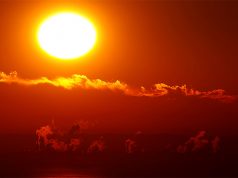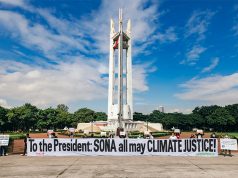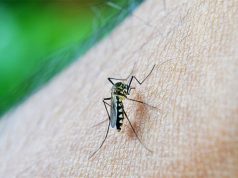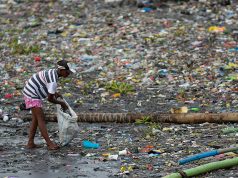
BONN, Germany — Four years since typhoon Yolanda (Haiyan), one of the most powerful storms ever recorded, unleashed death and destruction on Eastern Visayas and the central Philippines, Joanne Sustento still vividly remembers the horrors that unfolded on November 8, 2013.
A day before the typhoon hit, Sustento says it was very hot in Tacloban City. She could not believe that there was a storm brewing. “It was a hot and sunny day, how can there be a storm?” she recalls.
But at 5 a.m. the next day, she woke up to howling winds that sent their home vibrating as an unimaginable amount of rain pounded down. “There was a ringing in my ears,” she says.
In a matter of minutes, dark water had filled their house. They clung desperately to metal window grills as they exited, fighting to keep from being carried away by the strong currents.
One by one
Sustento’s sister-in-law Geo was the first casualty . A snake bit Geo and, as she weakened, she began saying her goodbyes even as she tried to hold on to her three-year old son Tarin. She eventually lost consciousness and floated away.
Despite wearing a life jacket, Tarin, who had autism, began drowning. Sustento’s eldest brother tried to save the boy but the current was too strong and he, too, was gone.
Sustento cried to her father as they tried to fight the rushing waters.
“I was always confident that my father would have the answers but that day he had none. I will never forget the defeated look on his face. I could not do anything.”
As the family was swept away , her father slipped from the log they were clinging to and was gone.
Sustento and her mother managed to hang onto the trusses of a building near their house. “The water was like a washing machine. It was turbulent,” she says.
Exhausted and devastated, Sustento says she was ready to die right then and there. “But then my mother shouted at me. Her voice pulled me out of the turbulence.”
Sustento forced herself to hang onto a door that was floating past.
She swam to save her mother. “I could still see there was still some life in her,” she says.
But her mother was already too weak and the strong current forced them apart.
On that day, Sustento lost her mother, father, eldest brother, sister-in-law and nephew. The body of her father was never found and she is uncertain if Tarin, who remains missing, is alive or dead.
“Everything was taken away by that storm.”
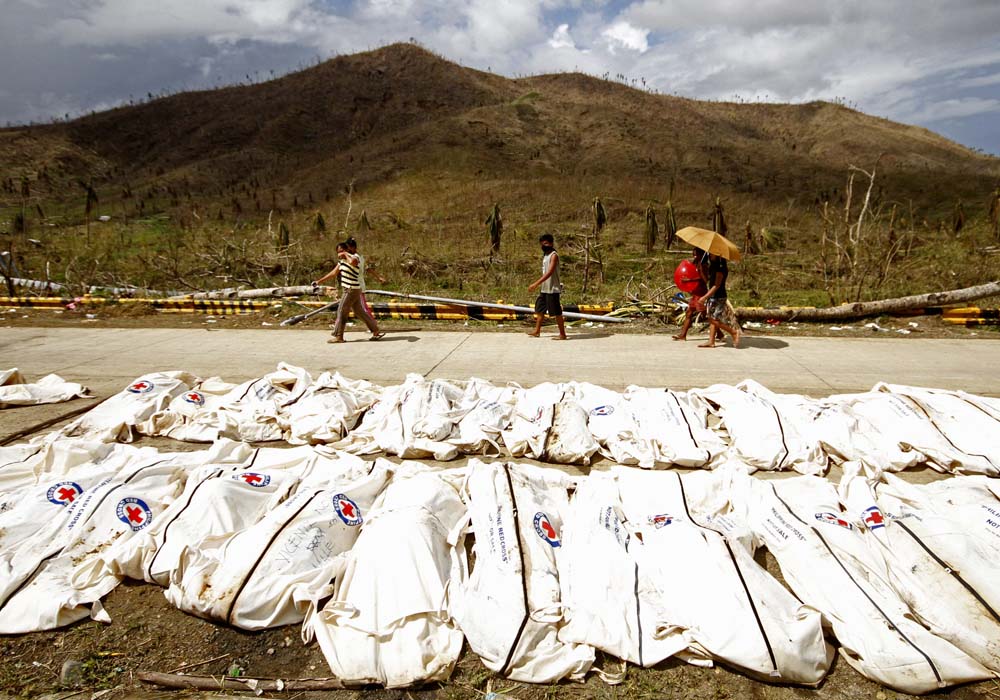
Deadliest storm on record
Officially, Yolanda killed more than 6,300 people, making it the deadliest storm to ever hit landfall in the Philippines. More than 1,000 are still missing and four million were affected by the disaster.
The supertyphoon, packing winds of up to 315 kilometers per hour, generated powerful storm surges that destroyed entire communities as it made landfall in the provinces of Leyte and Samar early in the morning of November 8, 2013.
Aside from the deaths, it is estimated to have caused as much as US$2 billion in damage to property.
Slow recovery
Four years after, the quest for justice for the thousands of lives lost and unspeakable damage remains. The slow rehabilitation and reconstruction of Tacloban City, in particular, has been the subject of much government criticism.
Former President Benigno Aquino III promised to build as many as 250,000 houses and relocate those living in coastal areas, the most vulnerable to storm surges. But a report by the Housing and Urban Development Council in 2016 said only 25,000 of the promised units were completed. Of these, only 2,500 had been occupied.
In the aftermath of the disaster, as much as P41.8 billion in foreign aid poured into the country, according to the United Nations Office for Coordination. However, slow disbursement of funds hampered recovery for many affected residents of Eastern Visayas.
A Commission of Audit report released in November 2015 said more than P364 million in foreign donations — meant to be distributed to Yolanda-affected communities to help them rebuild their lives — was sitting in the bank account of the Office of Civil Defense , the implementing agency of the National Disaster Risk Reduction and Management Council .
Impassioned plea to the world
As the horrors of Typhoon Yolanda was slowly unfolding, Yeb Saño, then the Philippines’ lead negotiator at the United Nations Framework Convention on Climate Change high-level talks in Warsaw, Poland, which took place as Yolanda struck, delivered an emotional appeal for the world to respond to the massive devastation in the Philippines.
“What my country is going through as a result of this extreme climate event is madness. The climate crisis is madness,” he said. Saño himself had relatives who were victims of Yolanda.
WATCH THE VIDEO OF SAÑO’S APPEAL (COURTESY OF GREENPEACE):
As a result of the horrific images from Yolanda, the COP 19 in Warsaw developed the Warsaw International Mechanism for Loss and Damage associated with Climate Change. The mechanism is meant to promote approaches to minimize loss and damage — irreparable impacts of climate change such as loss of lives in extreme weather events and sinking of islands due to rising sea levels.
However, it remains to be a controversial topic in climate negotiations as developed countries are averse to questions of accountability and liability.
The Paris Agreement
In 2015, the UNFCCC forged the Paris Agreement, a landmark climate treaty that was signed by 195 countries. The climate accord pushes to keep global temperatures well below two degrees Celsius as well as mitigation of greenhouse gases, adaptation practices and climate financing.
In addition to these, it also includes a provision for ‘loss and damage.’ The provision includes enhancing action and support, especially financing, to address loss and damage associated with the adverse effects of climate change.
However, specific rules on its implementation have stalled, as developed countries are wary of touching on the issue of liability. Acknowledging liability would mean that those who have historically contributed more to the causes of climate change must pay for the cost of loss and damage.
‘An insurance system’
Manila Observatory chair and veteran climate negotiator Antonio La Viña says that the loss and damage mechanism is akin to an insurance fund where countries make contributions to a global fund. It will be used in the event of an extreme weather event or slow onset events to compensate countries for damages.
“It advanced in Warsaw because of Haiyan but we don’t want another Haiyan to happen for this to advance further,” La Viña says.
Emmanuel de Guzman, secretary of the Climate Change Commission and head of the Philippine delegation to COP 23, says that the delegation will be pushing for more support for adaptation measures and the immediate action of development and implementation of the Paris Agreement.
He adds that loss and damage is still an issue but did not elaborate on the specific plans of the delegation to push for it.
According to De Guzman, President Rodrigo Duterte’s message is of climate justice. “We are an insignificant emitter. We should be on the receiving end of finance and support.”
When asked if this is the directive of the President, despite his prior reluctance to ratify the Paris Agreement, De Guzman said Duterte had always wanted to sign the agreement but had a few questions on the matter such as its legal implications.
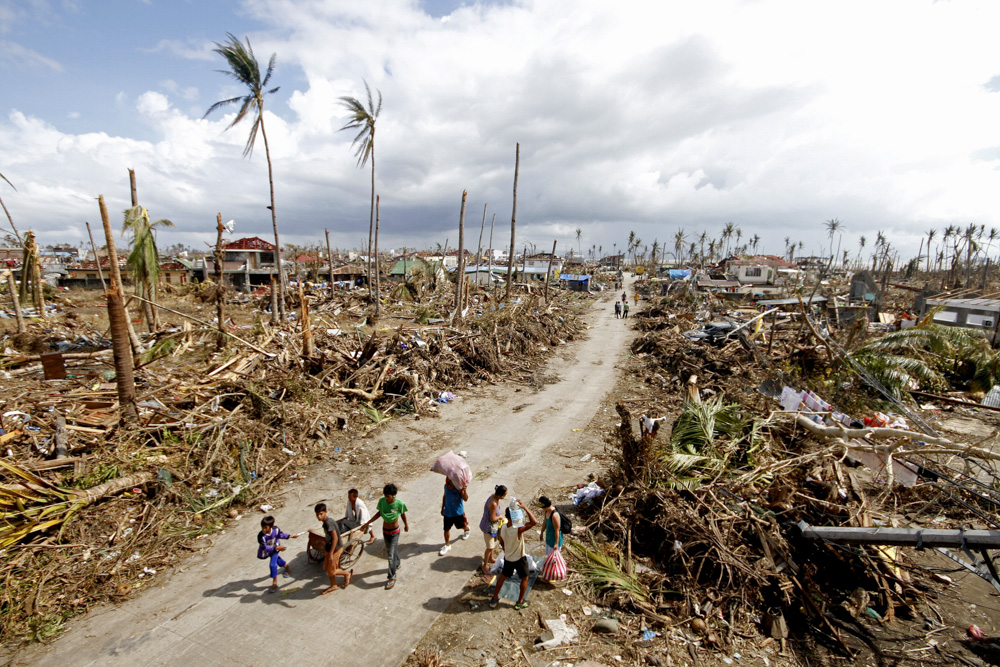
COP 23: Battleground for climate justice
As the world braces for the ‘new normal’ of increasing occurrences of extreme weather events, Saño, now the executive director of Greenpeace Philippines, is calling on the negotiations to steer the world from its reliance on fossil fuels.
“Fossil fuels must stay in the ground. Government delegations meeting in Bonn must stand up and propel climate action forward or be held accountable for their inaction,” he said in a press statement.
With the implementation of the Paris Agreement set to start in 2023, Bonn, Germany will be the staging ground of the rulebook for the treaty, which must be finished by 2018. It remains to be seen if loss and damage will be given a significant push in the negotiations.
Climate justice
For many Yolanda victims, the inclusion of loss and damage in the agenda of the Paris Agreement presents an opportunity to deliver climate justice to the most vulnerable people to climate change.
Sustento says that she remains traumatized by Yolanda.
Many survivors, she says, feel that those who died in the storm were luckier because they no longer have to think about the future. Sometimes she wonders if life is still worth living after losing seven family members, including both her parents.
In the years following her trauma, Sustento turned to activism. She is part of a movement that calls on rich countries to be accountable to their contributions in accelerating the effects of climate change and provide financing for concrete adaptation and mitigation measures.
“Our lives are not less than yours.”





